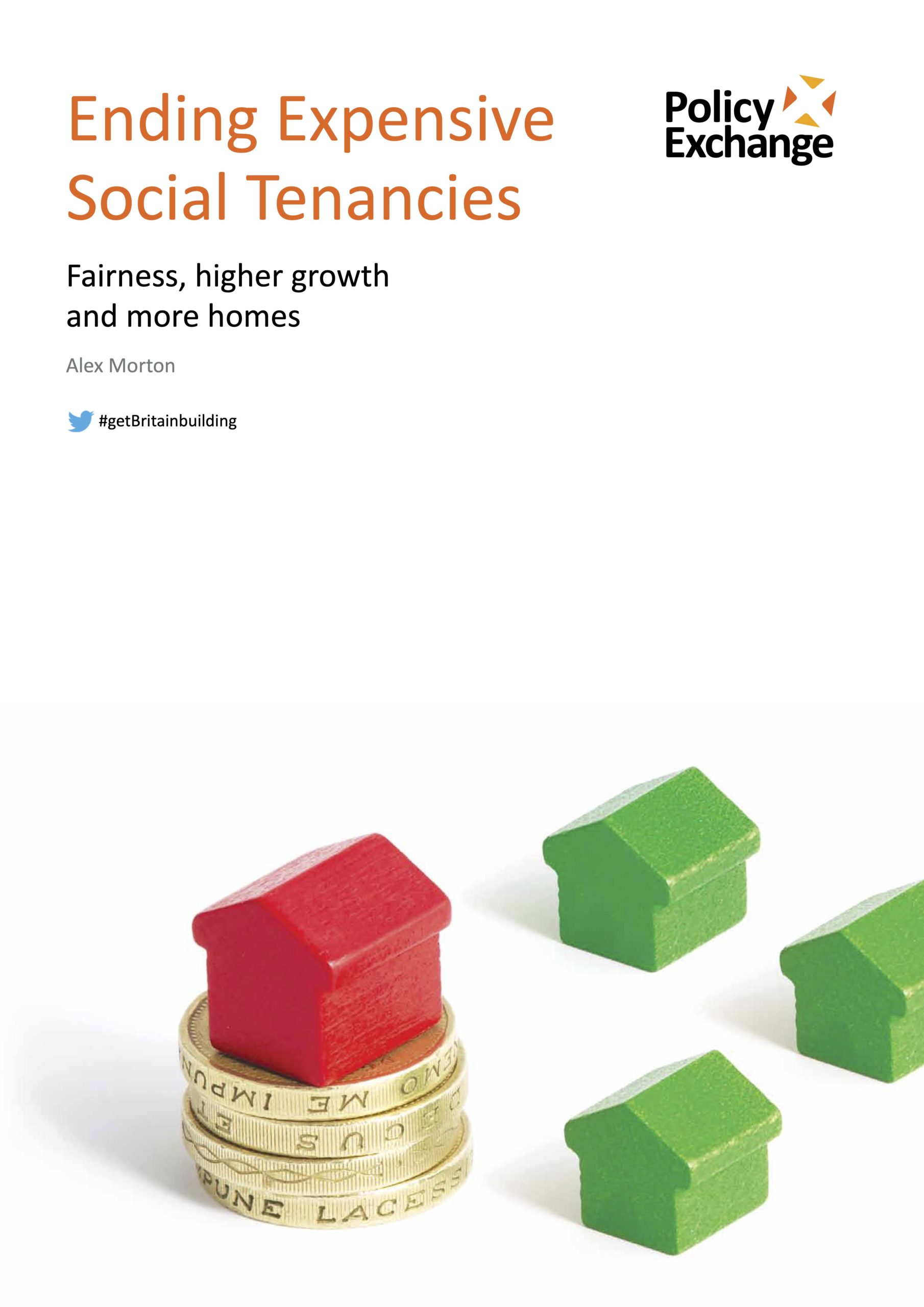
Ending Expensive Social Tenancies: Fairness, higher growth and more homes
Selling expensive social housing as it becomes vacant could create the largest social house building programme since the 1970s. The sales would raise £4.5 billion annually which could be used to build 80,000-170,000 new social homes a year and reduce the housing waiting list by between 250,000 to 600,000 households in five years.
The report says that ending expensive social housing:
- Will generate growth and jobs. This reform should allow 80,000-170,000 new homes every year. This would create 160,000-340,000 jobs a year in the construction industry.
- Is extremely popular with all sections of society. 73% of people including social tenants think that people should not be given council houses worth more than the average property in a local authority. By 2:1 voters agree people should not be given council houses in expensive areas.
- Has no real effect on employment. More expensive areas do have slightly higher employment rates but these differences are very small. Since people commute to work – either by public transport or car – the only effect of moving tenants is reducing time spent travelling and travel costs. This is not a major driver of employment
- Raises tenants’ standard of living. The majority of social tenants are either totally or largely reliant on benefits. Someone living on benefits in an expensive part of London will pay a 10-15% premium compared to someone living in a cheaper area.
- Reduce the housing waiting list by between 250,000 to 600,000 households in five years. The overwhelming majority of people waiting for a council house will benefit from these reforms.
Impact
On 27 January 2014, housing minister Kris Hopkins backed the report, calling for the selling off of expensive social housing to fund the construction of more new affordable social housing.
In the 2013 Autumn Statement George Osborne announced that “councils will sell off the most expensive social housing, so they can house many more families for the same money”.
The Autumn Statement document (point 1.228) stated “The government will increase the funding available for new affordable homes, by increasing local authority Housing Revenue Account borrowing limits by £150 million in 2015-16 and £150 million in 2016-17, allocated on a competitive basis, and from the sale of vacant high-value social housing.”
On 20 August 2012, the Prime Minister backed the report, with his official spokesman saying ” need to think about how they can use that social housing more efficiently. If they can sell very high-worth housing and invest in more social housing and find homes for more people, that’s something that should be looked at.”
On 19 August 2012, the then housing minister Grant Shapps backed the proposals, calling them ‘blindingly obvious’.

